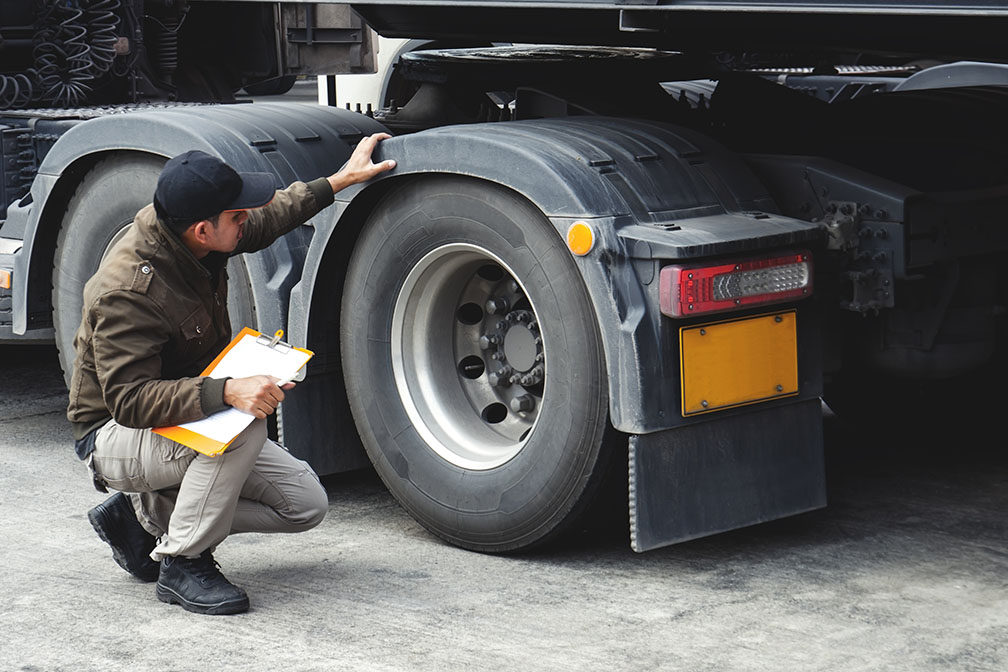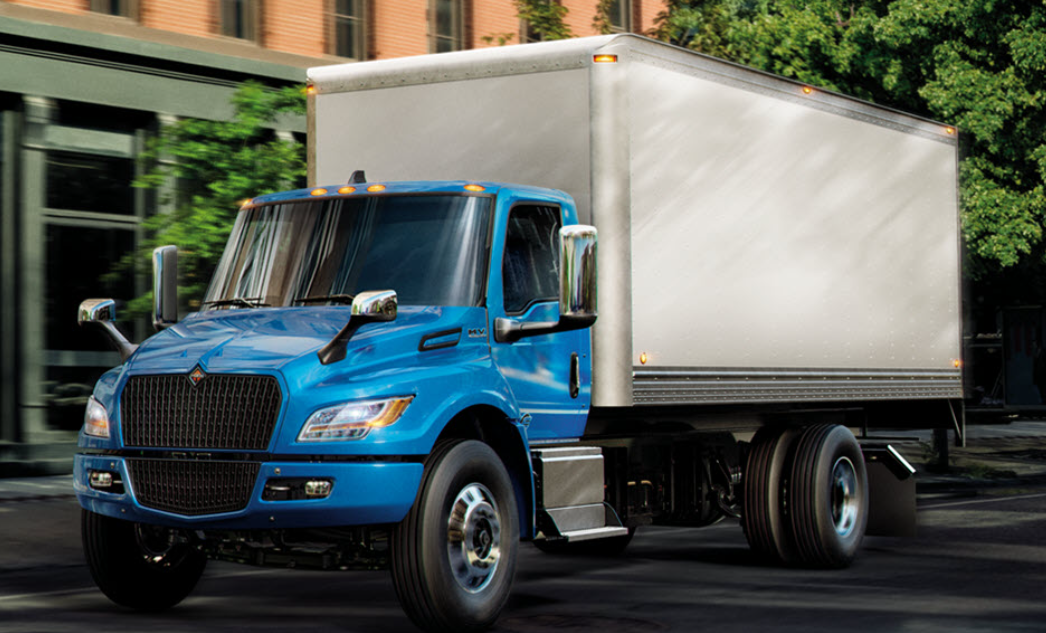This week we had the largest winter storm, “Olive,” impact over one-third of the United States, with another significant storm, “Piper,” that is right behind hitting the west coast right now. Now is the time to reinforce to your drivers that they cannot let up their guard and must continue to practice sound winter driving techniques.
Please review the following tips with your drivers:
- Reduce your speed!
- When it snows, use your head, not your feet. Slow down for wet, snowy, or icy conditions; when visibility is poor; or when conditions are changing or unpredictable.
- Slow down when approaching intersections, off-ramps, bridges, or shady spots. These are all candidates for developing black ice — a thin coating of clear ice that can form on the pavement surface that may be difficult to see.
- Avoid excessive actions while steering, braking, or accelerating to lessen the chances of losing vehicle control.
- Space out! Leave plenty of room between your truck and others. Stopping your truck in adverse weather conditions takes more time and distance, so use your brakes carefully. Brake early, brake slowly, brake correctly, and never slam on the brakes.
- No Cruising! Avoid using cruise control in winter driving conditions. You need to be in control of your speed based on road conditions — don’t let the cruise control make a bad decision for you.
- Remember: Winter conditions call for different driving tactics. Ice and snow take it slow—slower speed, acceleration, steering, and braking.
- Safe Travel Around Snow Plows
- Don’t crowd the plow. Snowplows plow far and wide—sometimes very wide. The front plow extends several feet before the truck and may cross the centerline and shoulders during plowing operations. Plows also turn and exit the road frequently.
- Don’t tailgate or stop too close behind snowplows. Snowplows are usually spreading deicing materials from the back of the truck and those materials can damage vehicle paint. Plows also may need to stop or take evasive action to avoid stranded vehicles. If you find yourself behind a snowplow, stay behind it or use caution when passing. The road behind a snowplow will be safer to drive on.
- On multiple-lane roads, watch for snowplows operating in either lane.
- Snowplows travel much slower than the posted speeds while removing snow and ice from the roads. When you spot a plow, allow plenty of time to slow down.
- A snowplow operator’s field of vision is restricted. You may see them, but they may not see you.
- Be Prepared!
- Before leaving on your route or trip, discover the driving conditions. Safe drivers know the weather, and they know their limits. If the weather is bad, remember, ice and snow, take it slow.
- Before venturing onto snowy roadways, ensure you’ve cleared the snow off all of your truck’s windows and lights, including brake lights and turn signals. Make sure you can see and be seen. Always buckle up, and remember, when driving in ice and snow, take it slow.
- Give yourself extra time to reach your destination safely. It’s not worth putting yourself and others in a dangerous situation to be on time.
CVSA Schedules Roadcheck for May 16-18
The Commercial Vehicle Safety Alliance has announced this year’s International Roadcheck dates as May 16-18.
Roadcheck is a 72-hour high-visibility, high-volume commercial motor vehicle inspection and enforcement initiative. Commercial motor vehicle inspectors in Canada, Mexico, and the U.S. will conduct North American Standard Inspections of commercial motor vehicles and drivers at weigh and inspection stations, roving patrols, and temporary inspection sites.
Each year, CVSA focuses on a specific aspect of a roadside inspection. This year the focus will be on anti-lock braking systems (ABS) and cargo securement. ABS violations are not out-of-service violations; however, the anti-lock braking system is critical in reducing collisions. A properly functioning ABS will prevent wheels from locking up or skidding, allowing a driver to maintain vehicle control while braking. Improper or inadequate cargo securement accounted for 10.6% of all vehicle out-of-service violations discovered during last year’s International Roadcheck. Past International Roadcheck data routinely found cargo securement violations in the top five of vehicle out-of-service violations.
Driver requirement inspections
During the inspection, inspectors will collect and verify the driver's documents, identify the motor carrier, check the driver's license and record of duty status, and review periodic inspection reports. If applicable, the inspector will also check the driver's medical examiner certificate, medical variance documents, and daily vehicle inspection report. Other driver-focused categories include seat belt use, sickness or fatigue, and alcohol and/or drug possession or impairment.
Driver requirements and vehicle mechanical fitness are the two primary parts of a North American Standard Level I inspection, a 37-step procedure. If applicable, a third part, hazardous materials/dangerous goods, may also be part of a Level I inspection.
Prepare drivers for Roadcheck
Inspections are conducted every day of the year across North America, but drivers should realize that the risk of being stopped will increase during Roadcheck.
Inspectors will primarily conduct the North American Standard Level I Inspection, the most thorough roadside inspection. It is a 37-step procedure examining driver operating requirements and vehicle mechanical fitness. Drivers must provide items such as their driver’s license, hours-of-service documentation, motor carrier registration, and shipping documentation. Inspectors will be checking drivers for seat belt usage and the influence of alcohol and/or drugs. The vehicle inspection includes checking items such as the brake systems, cargo securement, coupling devices, driveline/driveshaft, exhaust systems, frames, fuel systems, lighting devices (required lamps), steering mechanisms, suspensions, tires, van and open-top trailer bodies, wheels, rims and hubs, windshield wipers, and emergency exits (on buses).
Learn more about International Roadcheck.
Biden Administration Announces Steps to Develop Electric Vehicle Chargers
The Biden administration has announced its latest actions to develop a national network of electric vehicle charging stations. These steps include the Federal Highway Administration’s final rule publishing minimum standards for federally funded EV infrastructure, a separate FHWA final rule waiving the Buy America requirements for EV charging equipment, and announcing that cities, towns, tribes, and states will soon be able to apply for the first round of $2.5 billion in competitive grants to build EV charging stations.
Also, the charging plans developed under the National Electric Vehicle Infrastructure (NEVI) Formula Programs will help to ensure that chargers operated by different networks will operate similarly and provide the traveling public with a predictable EV charging experience. These standards will also require that chargers have consistent plug types and charging speeds, common payment systems, and accessible pricing information, locations, and availability.
Further, the new Charging and Fueling Infrastructure (CFI) Discretionary Grant Program established by the 2021 infrastructure law will provide $2.5 billion over five years to a full range of applicants, including cities, counties, local governments, and tribes. This round of funding will open soon, making $700 million from fiscal years 2022 and 2023 funding available to deploy EV charging infrastructure and other fueling infrastructure projects in urban and rural communities in publicly accessible locations.









